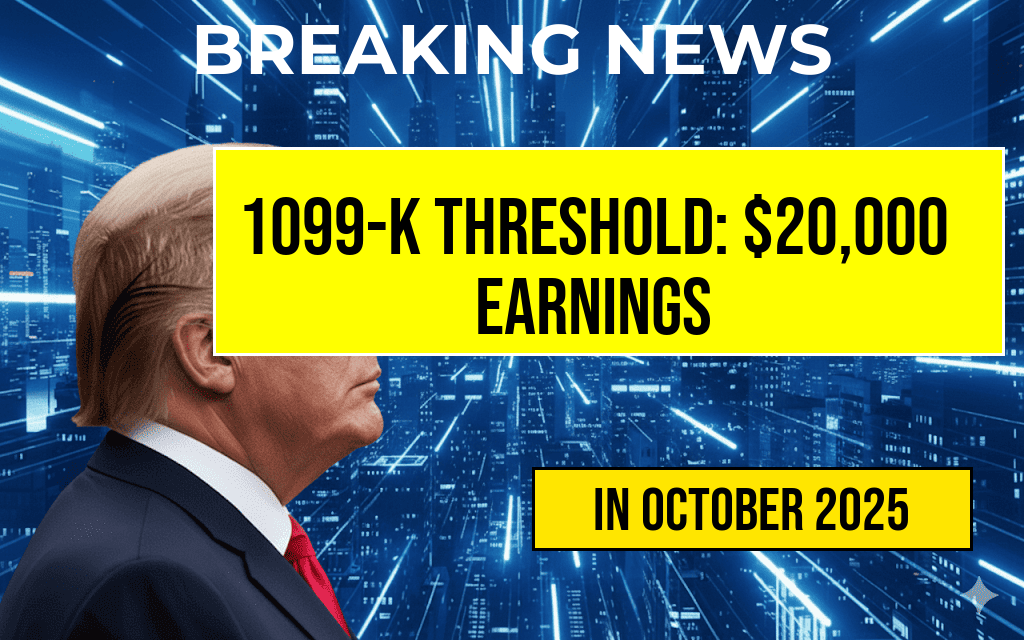For many gig workers and side hustlers, understanding when they will receive a Form 1099-K from payment processors or online marketplaces is crucial for proper tax reporting. The Internal Revenue Service (IRS) stipulates that a 1099-K is issued if a taxpayer’s gross payments for goods or services exceed $20,000 combined with more than 200 transactions within a calendar year. This threshold has historically served as a benchmark for reporting income from various online platforms, including marketplaces like eBay, Etsy, and payment services such as PayPal and Stripe. However, recent changes introduced by the American Rescue Plan Act, effective starting 2022, have lowered the reporting threshold to $600, regardless of transaction volume. This shift significantly impacts casual sellers and those with smaller side gigs, bringing many more into the IRS’s tax reporting scope. Understanding these thresholds helps side hustlers anticipate their tax obligations and avoid surprises during tax season.
Understanding the 1099-K Reporting Threshold
Historical Context and Current Regulations
Previously, the IRS mandated that payment settlement entities issue a Form 1099-K only when gross payments exceeded $20,000 and involved more than 200 transactions annually. This dual threshold was designed to reduce reporting burdens on low-volume, casual sellers. However, the American Rescue Plan Act of 2021 amended this rule, and starting in 2022, the threshold was lowered to $600 with no minimum transaction count. As a result, many individuals conducting side gigs or selling items through online platforms now receive a 1099-K if they earn more than that amount in a calendar year, regardless of how many transactions they complete.
Implications for Side Hustlers
| Year | Reporting Threshold | Transaction Minimum |
|---|---|---|
| Pre-2022 | $20,000 | 200 transactions |
| 2022 and onward | $600 | None |
This change means that many individuals earning modest amounts from side jobs or online sales will now receive a Form 1099-K, making those earnings more visible to the IRS. Taxpayers should be prepared to report all income, even if they do not receive this form, as the IRS also receives copies for matching purposes.
Tax Filing Considerations for Small Earners
Reporting Income Without a 1099-K
Receiving a 1099-K is not a prerequisite for reporting income; it’s simply an informational document for the IRS. Many side hustlers who earn less than $600 or who do not meet the transaction threshold may not receive this form but are still required to report all income earned from their activities. Failure to do so can lead to penalties or audits. Keeping detailed records of income and expenses remains essential, especially for those operating as sole proprietors or through LLCs.
Tax Strategies and Deductions
- Tracking expenses: Costs related to supplies, shipping, platform fees, and home office expenses can be deducted to lower taxable income.
- Quarterly estimated taxes: Small earners should consider making quarterly payments to avoid penalties at tax time.
- Consulting professionals: Tax advisors can help navigate reporting requirements and optimize deductions.
Looking Ahead: Regulatory and Platform Changes
Platform Policies and User Awareness
Online marketplaces and payment processors are increasingly transparent about their reporting obligations. Platforms like Etsy and eBay often notify sellers when their earnings approach the reporting threshold, allowing users to prepare accordingly. Additionally, some platforms are updating their policies to ensure users understand their tax responsibilities, which helps mitigate surprises during tax season.
Potential Future Adjustments
The IRS and policymakers have ongoing discussions about adjusting thresholds and reporting requirements to better capture income from the gig economy. As digital transactions continue to rise, staying informed about regulatory developments is vital for anyone engaged in side activities.
Resources for Taxpayers
- Wikipedia: Form 1099-K
- Forbes: IRS Lowers Reporting Threshold for 1099-K
- IRS: Reporting Payments through Third-Party Network Transactions
Frequently Asked Questions
What is the 1099-K form, and when do I receive it?
The 1099-K form is a tax document that reports payment card and third-party network transactions. You receive it if your gross earnings through platforms like PayPal, Venmo, or other payment processors exceed $20,000 in a calendar year and you have more than 200 transactions.
How does the threshold for receiving a 1099-K affect my side hustle income?
The threshold determines whether you will receive a 1099-K. If your total earnings are below $20,000 or you have fewer than 200 transactions, you typically won’t receive this form, but you are still required to report all income on your tax return.
Can I still be taxed on earnings if I don’t receive a 1099-K?
Yes, you are legally obligated to report all income, regardless of whether you receive a 1099-K. The absence of the form doesn’t exempt you from paying taxes on your side hustle earnings.
What should I do if I earn more than $20,000 but do not receive a 1099-K?
If you earn more than $20,000 and have over 200 transactions, you should receive a 1099-K. If you don’t, contact your payment processor to ensure proper reporting. Regardless, you must report all income on your tax return.
Are there any strategies to stay below the 1099-K threshold for my side hustle?
Yes, you can manage your transactions and earnings to stay below the $20,000 and 200 transactions threshold if you prefer not to receive a 1099-K. However, it’s important to accurately report all income for tax compliance.

Leave a Reply